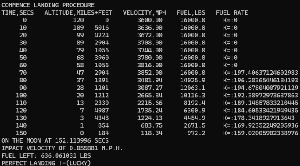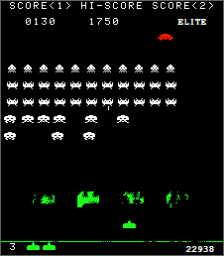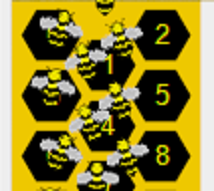I wrote this application behind this post back in April 2022. I wanted to have a number of things to blog about before setting up a blog. To be honest, at that point, I thought Her Majesty Queen Elizabeth II was immortal and it would take Thanos and his Gauntlet stones to change that.
Sadly she passed away on September 8th 2022, as you might have noticed given a week of 24×7 coverage.
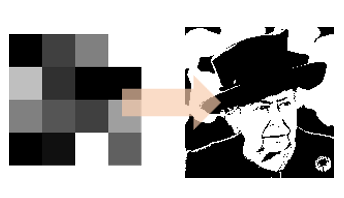
Like many people out there, I have nothing but admiration and respect for her service to my country. You don’t have to agree, I am aware some people feel malice and hatred towards her personally, so I politely ask that nobody posts any comment about her or the monarchy – you are entitled to your opinion, but please don’t voice it on this blog. That includes anything about the colonial past, Common Wealth, Kohinoor or Africa star etc. It’s not I don’t care, or have an opinion, I just don’t want folks to have disagreements, because that isn’t fun.
This is an AI/ML blog, so let’s keep comments on the core topic, please.
If you don’t like my image choice, I apologise. I still see it as a tribute to her, as it was, before her passing.
A “Thought” Experiment
I saw a few good postings where AI can apparently turn pixelated images into higher-resolution images. That’s amazing, and sadly far too cool for me. It’s genius, but I love the inability to get glasses correct. Despite that, I am in awe of what they did.

It demonstrates the difference between real intelligence and AI. A human can see that they are wearing glasses, and factor that in the re-draw. To be fair one would have to make a guess, as it isn’t blatantly obvious. Maybe with the breakthrough of DALL-E and others, that problem will be taken care of before long.
Suddenly all the X-Files where the FBI processed poorly pixelated images to see something in high resolution that is physically impossible now looks possible; alas it isn’t. You can only speculate what a pixel might represent you cannot see something that wasn’t recorded.
Anyway, as usual, I am aiming the bar much lower but on a similar theme.
The idea isn’t so much about the image, but more about what the concept could be used for (hiding a message) or maybe even something useful – it doesn’t have to be an image. A neural network can hide data.
I hope the idea brings a smile.
Below we have a source image that’s very pixelated. I have taught the AI to provide a less pixelated image – after just 2456 generations which isn’t long, you can see it working. The image on the right was created of the very pixellated image on the left.
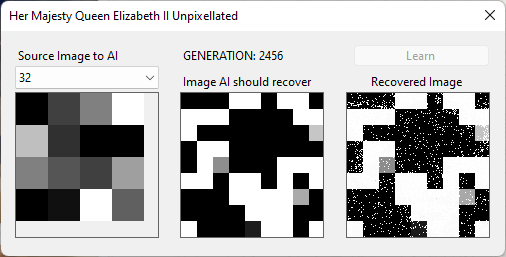
Now, if I give it the 2nd image, it returns a less pixelated image.
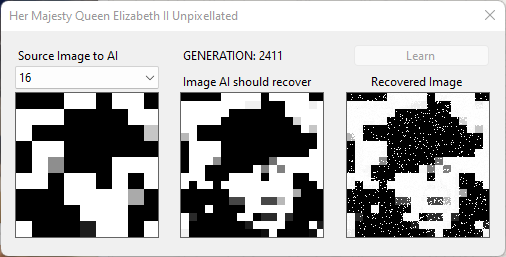
We repeat…
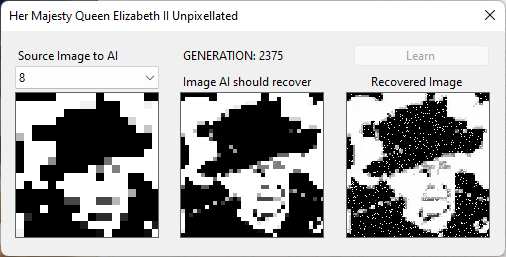
And it’s taking shape.
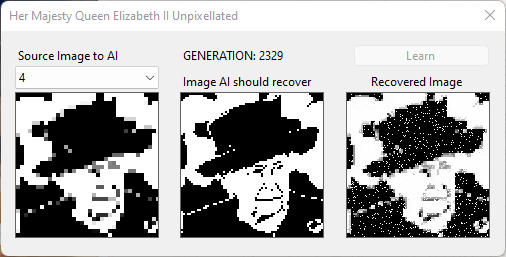
Here’s the final one. Sorry generations look out of sync, that’s down to snipping in reverse order.
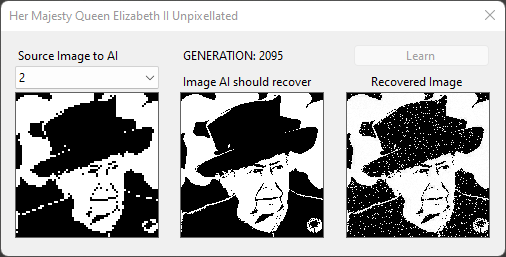
Let’s think about that.
I have effectively put multiple images into the neural network and it can return them all individually. Yes, they are a little grainy but I only gave it 2000 generations which is nothing.
If you sent me image #32, and with this neural network I could turn 32 into 16 into 8 into 4 into 2 into 1.
The question is what use is all this? I don’t honestly know. I was curious about what might happen, and now we both know.
As usual, the code is on GitHub.
Suggestions in the comments, please!



